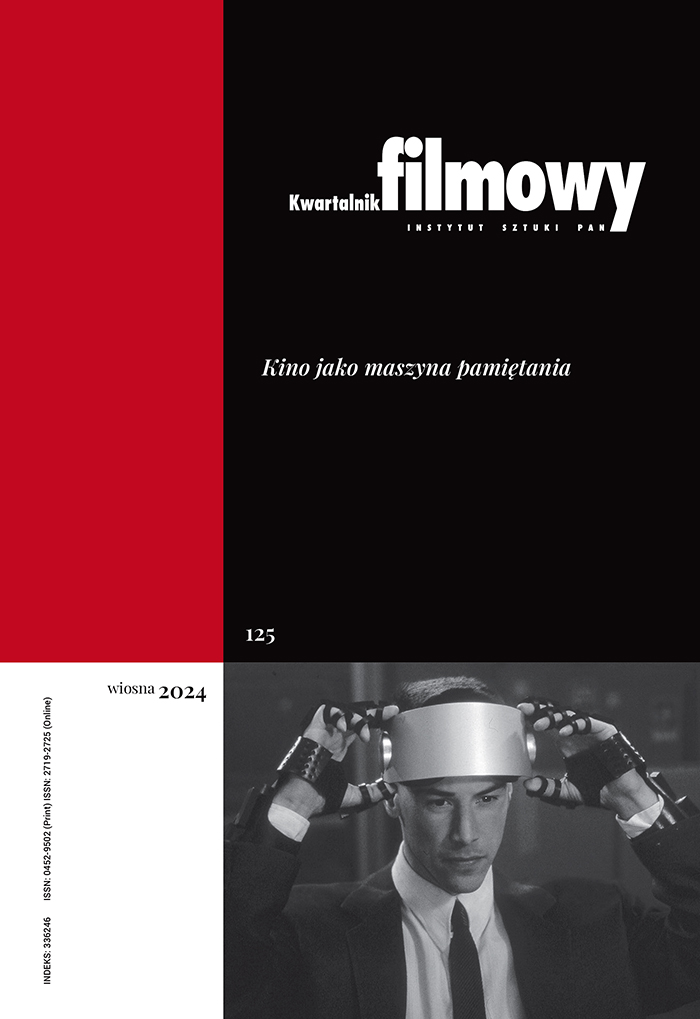Bottle and String With Wet Clothes: On Yasujiro Ozu’s “Tokyo Story” and “Floating Weeds”
Abstract
Pierzchała tries to show inseparability of such aesthetic tricks as editing, camera movement, construction of the represented world with ethics and the message of Ozu’s film. The issue of cultural diversity of the Orient and the Occident in the area of film poetics is also raised here. European and American directors usually aim at blurring the line between the viewer and the represented world. Ozu’s aspiration to have a connection „with reality” is rather expressed in the techniques to reduce a surplus of meanings, and not in „realism”.
Keywords:
Yasujiro Ozu, Japanese cinema, aestheticsReferences
Nie dotyczy / Not applicable
Google Scholar
Authors
Aneta Pierzchałakwartalnik.filmowy@ispan.pl
Institute of Art, Polish Academy of Sciences Poland
Doktorantka w Instytucie Sztuki Polskiej Akademii Nauk. Redaktorka „Kwartalnika Filmowego”.
Statistics
Abstract views: 113PDF downloads: 24
License
Copyright (c) 2000 Aneta Pierzchała

This work is licensed under a Creative Commons Attribution 4.0 International License.
The author grants the publisher a royalty-free non-exclusive licence (CC BY 4.0) to use the article in Kwartalnik Filmowy, retains full copyright, and agrees to identify the work as first having been published in Kwartalnik Filmowy should it be published or used again (download licence agreement). The journal is published under the CC BY 4.0 licence. By submitting an article, the author agrees to make it available under this licence.
In issues from 105-106 (2019) to 119 (2022) all articles were published under the CC BY-NC-ND 4.0 licence. During this period the authors granted a royalty-free non-exclusive licence (CC BY-ND 4.0) to use their article in „Kwartalnik Filmowy”, retained full copyright, and agreed to identify the work as first having been published in our journal should it be published or used again.
Most read articles by the same author(s)
- Aneta Pierzchała, Japanese Ghosts , Kwartalnik Filmowy: No. 51 (2005): Film in Asia
- Aneta Pierzchała, Can Martial Arts Master Be an Artist?: Reflections on Takashi Koizumi’s “Ame Agaru” , Kwartalnik Filmowy: No. 33 (2001): Film Portrait of an Artist
- Aneta Pierzchała, Master on Stage: Reflections on “A Perfect Actor: Zeami’s Treaties on the Art of Noh” , Kwartalnik Filmowy: No. 37-38 (2002): Actor and Film Character
Similar Articles
- Piotr Kletowski, To Film the Soul: An Introduction to the History of Japanese Cinema. 1. Primary Period (1895-1923); 2. Classic Period (1923-1945) , Kwartalnik Filmowy: No. 51 (2005): Film in Asia
You may also start an advanced similarity search for this article.











